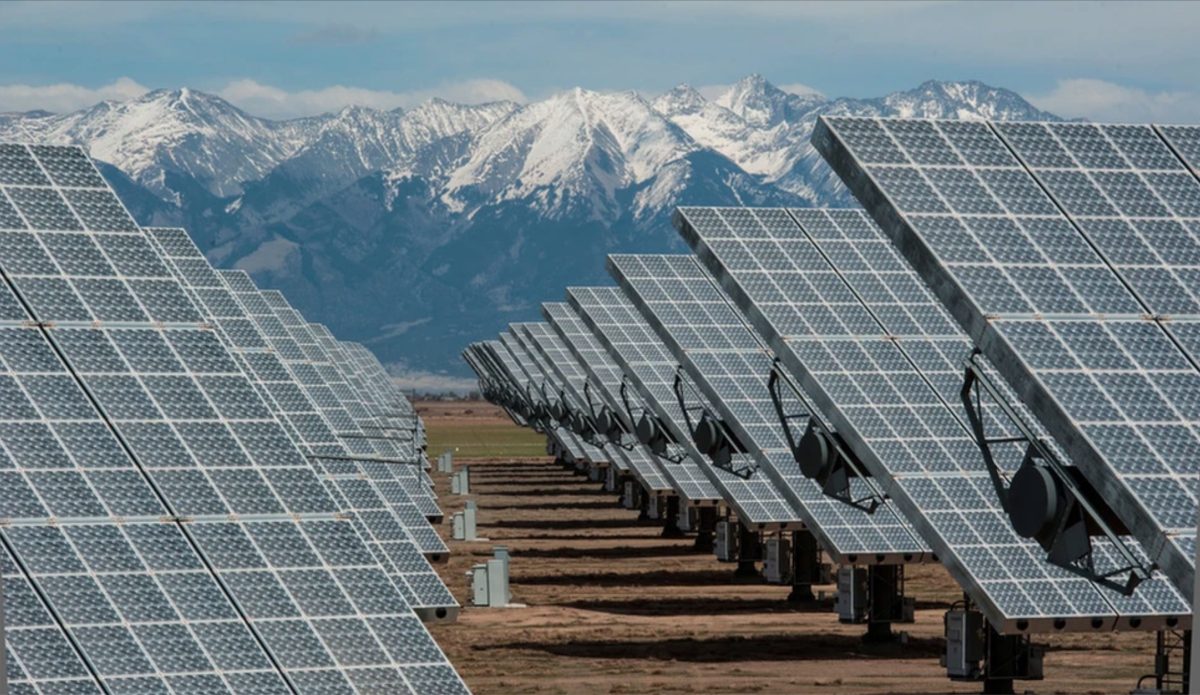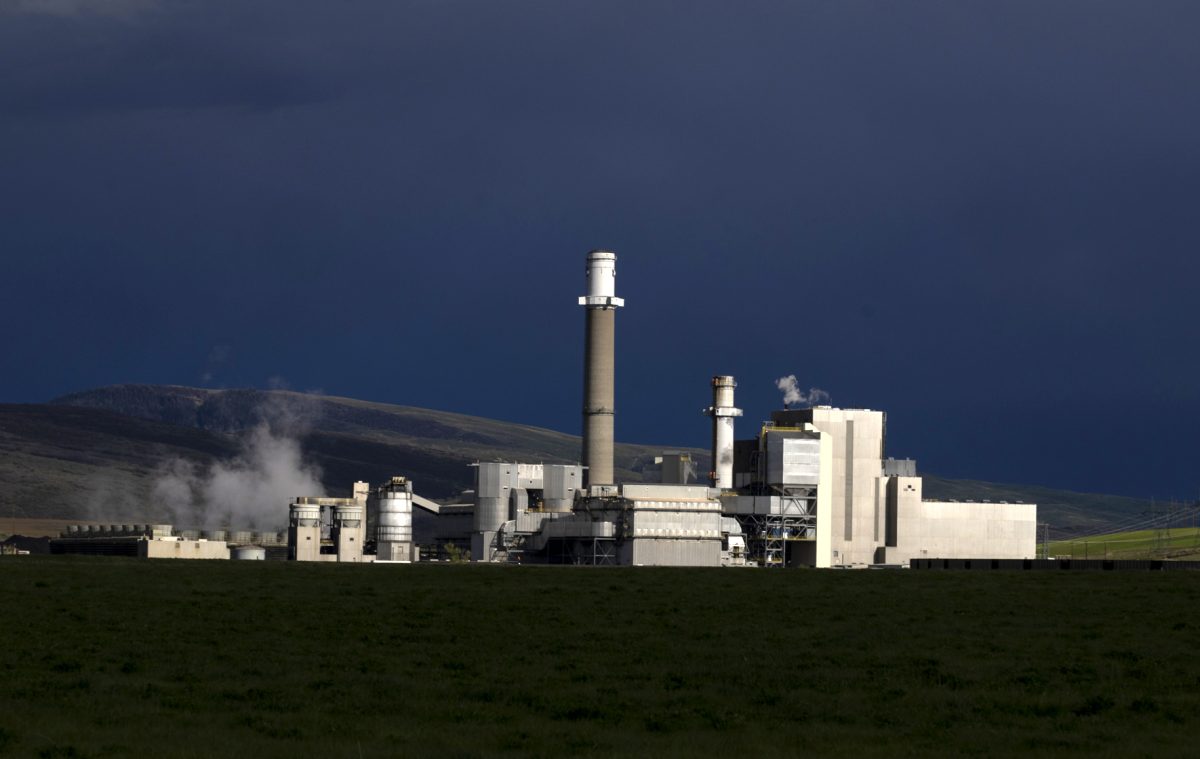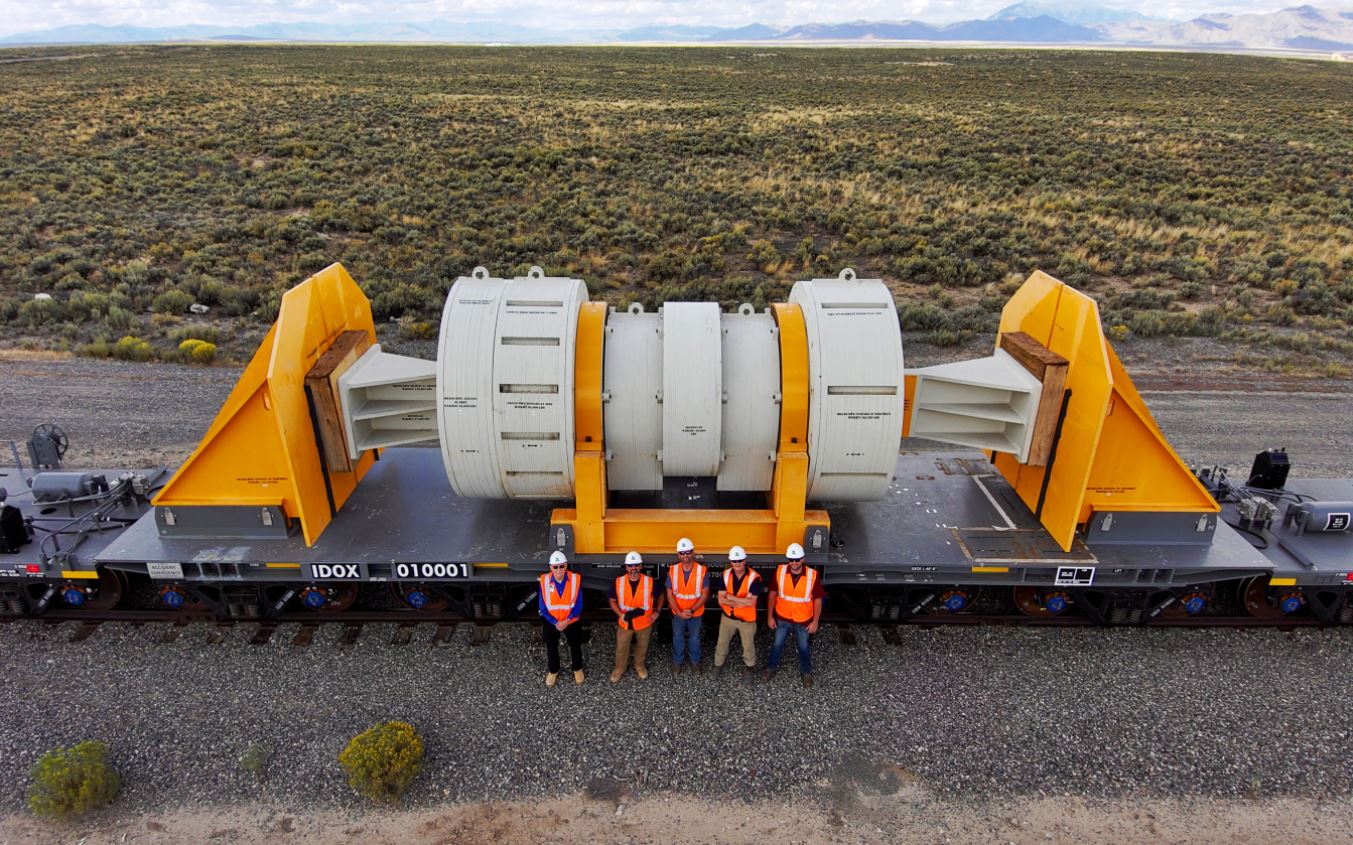Nuclear power — an innovative source of fossil-free power potential, or a radioactive risk that threatens public health and the environment, depending on whom you ask — is back on the table in Colorado.
House Bill 1040, which adds nuclear energy to the state’s list of clean energy resources, was signed into law Monday by Gov. Jared Polis.
The state defines clean energy as geothermal, solar, small hydroelectricity, wind and hydrogen energy. The law essentially tacks the words “and nuclear” onto the end of that list, opening up future nuclear projects to special funding opportunities.
But nuclear energy has a fraught history that left the bill’s many opponents wondering about Colorado’s definition of clean.
Nuclear energy requires uranium, a radioactive element that is mined and milled for nuclear power and weapons production. Uranium production in the U.S. takes place primarily on public and tribal lands in the West.
There’s also the question of nuclear waste, once power has been generated: where to put it, and who is responsible for keeping it secure.
The bill’s sponsors dodged specific questions about how waste would be stored by pointing out that the bill does not promise any nuclear development, it only makes those projects a more economically viable option. Nuclear energy is not banned in Colorado, and nuclear power plants have been proposed as recently as last fall.
“House Bill 1040 is not — is not — a mandate, nor does it require that a city or a utility use nuclear energy,” Sen. Larry Liston, a Colorado Springs Republican, said during a Senate committee hearing March 10. “It only adds nuclear as a recognized form of clean energy.”
Liston has proposed a similar bill twice before, in 2023 and 2024. Neither measure made it out of its first chamber. This year, though, Liston was joined by Sen. Dylan Roberts, a Frisco Democrat, and Reps. Alex Valdez, a Denver Democrat, and Ty Winter, a Republican from Trinidad, in the House.
The driving force of the newfound bipartisan support is the increasingly urgent issue of moving the state away from fossil fuels while maintaining a stable electrical grid and avoiding layoffs for large portions of Colorado’s workforce.
A plan to create a national nuclear waste depository is being explored in Roberts’ district in the northwestern corner of the state.
Roberts told the chamber that he would not push nuclear production over solar, wind and geothermal.
“But numbers don’t lie,” Roberts said. “We will never get to 100% carbon-free energy with just wind and solar.”
Between coal-fired and carbon-free
Nuclear energy has been in and out of fashion since the 1950s. Throughout the ’50s and ’60s, the U.S. went on a nuclear reactor building spree — by the end of the 1960s, there were more than 50 reactors under construction or built in the U.S.
But the industry started to experience a slowdown in the 1970s, and the Three Mile Island meltdown at a nuclear power plant in Pennsylvania in 1979 ground things to a halt. Costs went up, regulations piled on, construction contracts were paused or canceled altogether.
In recent years, the intensity of climate change and pressure to shift away from fossil fuel use has created a nuclear power resurgence among clean energy groups. In June, TerraPower, the nuclear energy company founded by Bill Gates, broke ground in Wyoming for a new generation of nuclear reactor, which uses a lower pressure system than the traditional reactors built around the U.S.
In any case, the pressure is on. Last year, global energy demand rose faster than ever before, largely due to high temperatures, widespread electric vehicle use and the growth of data centers in the U.S. and China, according to a report by the International Energy Agency released Monday.
 Whetstone Power is using a $16 million loan and $1 million grant from the federal government to help upgrade the power output from a 30MW solar farm near Alamosa in the San Luis Valley. United Power has a contract to buy the power for the co-op’s members. (Whetstone Energy)
Whetstone Power is using a $16 million loan and $1 million grant from the federal government to help upgrade the power output from a 30MW solar farm near Alamosa in the San Luis Valley. United Power has a contract to buy the power for the co-op’s members. (Whetstone Energy)
The report found that renewable energy sources like wind and solar, along with nuclear, supplied the majority of the increase in power supply at about 40% overall. Wind and solar accounted for 32% of that increase, while nuclear supplied about 8%.
But nuclear capacity is — and will continue — growing, according to the report. About 33% more nuclear power was brought online in 2024 compared with 2023, while construction for nuclear power plants grew by 50%.
The report also pointed out that nonrenewables, like coal and natural gas, are better equipped to handle energy fluctuations during extreme weather events. Heat waves in China and India accounted for almost the entire increase in coal demand last year, the report concluded.
This in-between stage — ready to embrace renewables, but unable to fully replace coal and natural gas — is where some Colorado communities are currently stuck. In northern Colorado, the Platte River Power Authority applied for a permit to bring five gas-powered turbines online as a “bridge” between the coal-fired present and a carbon-neutral future. While solar, wind and hydropower make up a growing portion of the company’s power portfolio, they have argued that renewables alone won’t fill the hole that the Rawhide coal station will leave when it closes in 2029.
Proponents of the new Colorado law argued that nuclear plants could take the place of the large, stable power supplies that coal and gas currently provide, without the greenhouse gas emissions that the latter sources generate. But opponents retaliated that granting nuclear the “clean energy” status could siphon money from solar, wind and geothermal projects.
A workforce in waiting
Here in Colorado, nuclear’s potential hits home for some communities facing coal-fired power plant closures, labor union representatives argued at the Senate hearing.
Pueblo, Craig and Hayden were repeatedly invoked along the law’s journey through the legislature, as examples of communities approaching an economic cliff when their coal-fired plants go offline over the next few years. In Moffat County, for example, the Craig Station and nearby coal mines provided 43% of property tax revenues for the county and accounted for 437 high-paying jobs in 2023.
“When we look at a just transition, we’ve also got to look at those workers that have helped power this state for decades and decades,” Nate Bernstein, executive director of Climate Jobs Colorado, told The Colorado Sun.
 The Hayden Station coal-burning power plant operating, May 19, 2024, near Craig, Colorado. (Hugh Carey, The Colorado Sun)
The Hayden Station coal-burning power plant operating, May 19, 2024, near Craig, Colorado. (Hugh Carey, The Colorado Sun)
Bernstein suggested replacing coal plants with nuclear plants outright. He pointed to a report prepared for the U.S. Department of Energy in 2022, where researchers found that four coal plants in Colorado have the potential to become nuclear reactor sites. The report was a high level evaluation of things like infrastructure, transmission lines and population density. The authors note that the report is for “hypothetical for analysis purposes only,” though, and that a more in-depth assessment is required for any specific site.
How clean is “clean energy”
Calling nuclear energy a “clean energy resource” because it doesn’t emit carbon dioxide is too narrow a view, though, according to environmental groups.
In order to create that carbon-free energy, nuclear reactors require a fuel made from uranium. Uranium is a naturally occurring, radioactive element that is mined and dried into a powdery substance known as “yellowcake.” The yellowcake is sent to a processing facility, where it is “enriched” into a usable fuel source for nuclear reactors, according to the World Nuclear Association. While there has been no uranium mining in Colorado since 2009, the scars of an active uranium industry can still be spotted all over the state.
In Cañon City, a former uranium mill that was closed in 2011 was contaminating the surrounding soil as recently as 2023, despite being designated as a U.S. Environmental Protection Agency Superfund site in 1984, and community members are still fighting off businesses interested in underground uranium deposits. Superfund sites, and former Superfund sites, that processed uranium for energy or weapons are found near Denver, in Montrose County and outside of Rifle. In 2023 the state took over cleanup efforts after the company keeping uranium out of Arvada’s water supply walked away.
“If this industry hasn’t cleaned up its old mess, why should we trust them with a new one?” Ean Tafoya, vice president of state programs for GreenLatinos asked the state Senate committee.
In southeastern Utah, the Ute Mountain Ute Tribe is engaged in an ongoing fight to shut down White Mesa Mill, the only fully licensed and operating uranium mill in the U.S., where about a million pounds of uranium per year is crushed and converted into usable nuclear fuel. White Mesa Mill is located on Ute Mountain Ute lands north of Bluff, Utah, and is owned by Lakewood-based Energy Fuels.
Meanwhile, the EPA has spent over $1.7 billion in enforcement agreements and settlements with the Navajo Nation to reduce the risk of radiation exposure from more than 500 abandoned uranium mines on the tribe’s land.
Shaina Oliver from the advocacy group Moms Clean Air Force spoke at the state Senate hearing to warn against the wide-ranging health impacts that uranium processing has had on her personal and family history. Her grandfather worked in a uranium mine during the 1960s, before gear was provided to protect him from radiation exposure, she told The Colorado Sun.
“We need to think about what we’re coming in contact with, people need to know the health impacts of uranium,” Oliver said. “(Nuclear energy) is not a win-win deal, it compromises our health in the long run. And sometimes you can’t protect people once these things are a done deal.”
Based on facts, either observed and verified directly by the reporter, or reported and verified from knowledgeable sources.
